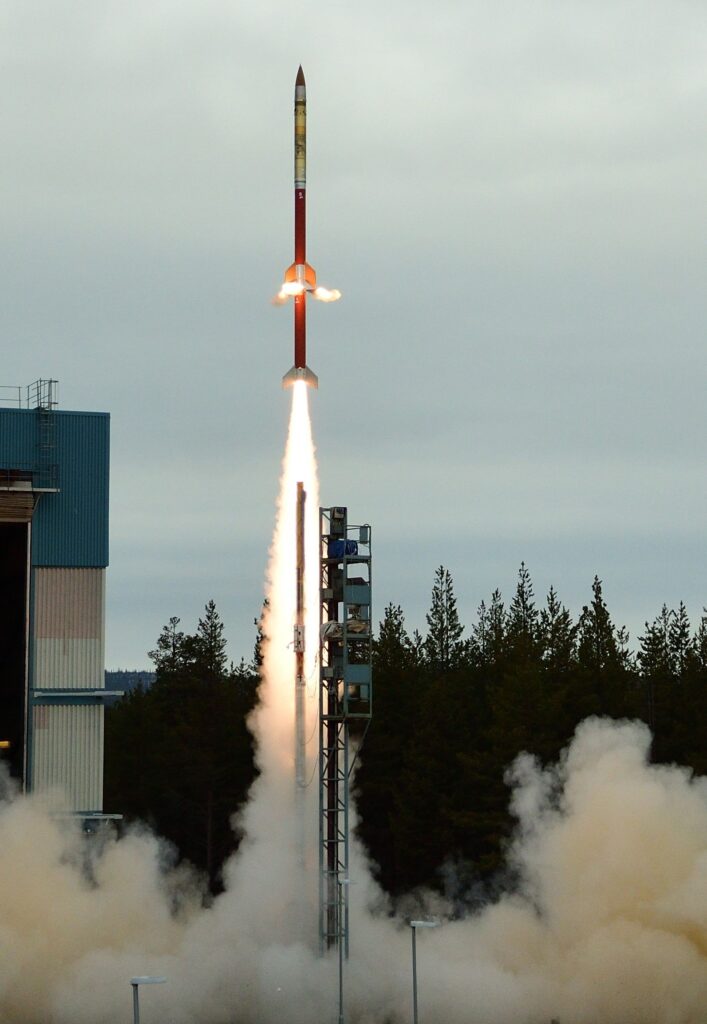As a first DLR/MORABA and Bayern-Chemie present details of their current cooperation on the “RED KITE” rocket propulsion system
Aschau am Inn, 19.10.2022 – Particularly powerful rocket engines of the type “RED KITE” to open up new perspectives for research in space – this is the goal behind the cooperation on propulsion development and production between DLR and Bayern-Chemie. As their representatives announced at a joint information event at the Bayern-Chemie site in Aschau/Inn the new propulsion systems will offer additional options for research and technology and contribute to the rocket-based European research work in space. The responsible DLR department MORABA (Mobile Rocket Base) is thus responding to a growing interest on the part of the national and international research community for such research projects.
A so-called “dual thrust” profile allows “RED KITE” propulsion systems to achieve high acceleration values immediately after launch – which are about ten times the acceleration due to gravity and decrease as the flight progresses thus minimising aerodynamic losses. This allows the “RED KITE” motor to be used as a booster stage for many other rockets in the MORABA portfolio. The DLR engines come partly from old military stocks and partly from civilian production. In conjunction with “RED KITE”, the national and international research community will have access to powerful two-stage sounding rockets in the future.
“RED KITE” propulsion systems can be used for a wide range of possible missions and trajectories. For research under weightlessness, steep trajectories with “RED KITE” rocket motors enable meaningful experiments outside the atmosphere and without disruptive acceleration forces for up to 7 minutes. Without the disruptive influence of gravity, material-physical phenomena, for example, can be investigated in a much more targeted manner. Research in the fields of re-entry and hypersonic technologies, on the other hand, benefits from trajectories that allow their payloads to be exposed to the stratosphere for minutes at speeds of up to Mach 8.
Rainer Kirchhartz, Head of MORABA, emphasises the potential of the new propulsion system: “RED KITE is a propulsion system that is specially designed to meet the needs of the scientific community’s research missions. Increased performance offers new potential for our research work, especially for microgravity research in all scientific fields. For the research goals of atmospheric physics, hypersonic research and technology testing, we now have access to extended payload capacities and research opportunities. Research rockets based on “RED KITE” rocket motors as lower and upper stages can carry payloads of more than 450 kg to altitudes of up to 260 km. These new rocket engines are also ideal staging partners for other rocket stages from military stocks.”

Copyright: Thomas Schleuß
Contact:
Bayern-Chemie
Dr. Thomas Haslinger
Head of Public Affairs & Manager Business Development and Strategy
Phone: +49 8638 601-233
Mobile: +49 151 1591 4127 thomas.haslinger@mbda-systems.de
German Aerospace Center (DLR)
Dr. Kathrin Schoppmann
Business Unit Development
Phone: +49 8153 28-1231
Mobile: +49 172 61 94 479
kathrin.schoppmann@dlr.de
